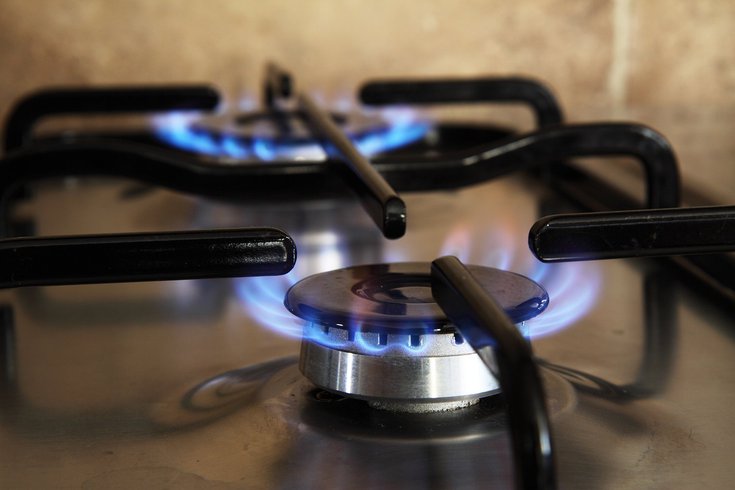
October 20, 2022
 Public Domain Pictures/Pixabay
Public Domain Pictures/Pixabay
New research shows gas stoves often leak benzene, a commonly used chemical that has been linked to certain cancers, including leukemia, multiple myeloma and non-Hodgkin lymphoma.
Gas stoves – among the most common appliances in the United States – have fallen under scrutiny for emitting chemicals that pose serious health risks and contribute to climate change.
New research shows these chemicals include benzene, a gas that has been linked to certain cancers. And these pollutants can slowly leak from gas lines even when stoves are not in use.
Researchers from PSE Health Energy, a nonprofit research institute, found at least 12 hazardous air pollutants being emitted from 159 residential stoves tested in 16 California counties. Benzene was found in 99% of the samples, with some indoor concentrations of the gas nearly seven times higher than the state's safety limits.
Benzene levels were consistent regardless of the gas provider or brand of appliance, researchers said. They based their calculations on the size of the kitchen and the room's ventilation level, the amount of chemical present and whether the stove was turned off.
Benzene is a colorless, flammable liquid with a sweet odor that evaporates quickly when exposed to air. It is produced during natural processes such as forest fires, but it is also one of the 20 most widely used chemicals in the United States. It is used to make other chemicals such as plastics, lubricants, dyes, detergents, drugs and pesticides, according to the American Cancer Society.
In the short term, benzene exposure can cause drowsiness, dizziness, headaches, tremors, confusion and unconsciousness. But it can affect blood platelet counts over the long term, leading to excessive bruising and bleeding and an increased risk of anemia. Benzene also has been linked to blood disorders and reproductive issues. Studies also show a strong link to certain cancers, such as leukemia, multiple myeloma and non-Hodgkin lymphoma.
Andrea De Vizcaya Ruiz, an associate professor of environmental and occupational health at the University of California, Irvine, told NBC News that people also can get exposed to small amounts of benzene when they fill up their cars' gas tanks or sit by a fireplace.
"It's one of the most direct chemicals that induces cancer, because it transforms the cells in the bone marrow," she said. She was not involved in the study.
Earlier this fall, another study found that gas being piped into 69 Boston-area cooking stoves contained a wide array of hazardous air pollutants, including benzene.
The other chemicals that gas stoves can leak can be hazardous, too. Nitrogen oxide, in particular, can irritate the eyes, the nose, throat and lungs and cane make some people feel tired, dizzy or even short of breath. It also has been linked to respiratory conditions, especially asthma.
A 2008 Environmental Protection Agency report found that homes with gas stoves have about 50% to more than 400% higher average nitrogen dioxide concentrations than homes with electric stoves.
Additionally, methane is the second most abundant greenhouse gas, after carbon dioxide, and is a significant contributor to climate change. This worsens ground-level ozone pollution, which aggravates people with respiratory conditions like asthma.
"Any time there is ongoing exposure to something other than oxygen," your lungs will suffer, Dr. Jamie Garfield, an associate professor of thoracic medicine and surgery at the Temple Health, told BuzzFeed earlier this year.
The adverse effects of gas stoves have led dozens of cities in California and elsewhere to ban gas hookups in many new homes and buildings since 2019, when Berkeley became the first to do so.
Earlier this year, PIRG, a federation of public interest research groups, launched a public awareness campaign aimed at getting Best Buy, a major U.S. appliance retailer, to better educate its customers on the health risks of gas stoves. According to PIRG, children living in homes with gas cooking have a 42% higher chance of experiencing asthma symptoms and a 24% higher chance of being diagnosed with asthma.
"Cooking with gas stoves emits harmful pollution into both our homes and the environment," Erin Skibbens, PIRG environment campaigns associate, said earlier this year. "Retailers, like Best Buy, have a responsibility to their customers to warn them of the potential dangers and health impacts of gas stoves sold in their stores.
"There's no justifying the tired belief that gas stoves are best. It's time to transition to cleaner, safer electric and induction cooking," she added.
Gas companies add compounds to natural gas so that it gives off a rotten egg smell. This is meant to alert homeowners to major leaks, but smaller leaks can go undetected.
Leaks can be caused by damage to the appliance, pipeline or gas storage facility.
Gas leaks can cause people to vomit, get a sudden headache or feel drowsy, dizzy or confused. Some people may experience nausea or breathing problems. People who suspect they have a gas leak are advised to immediately leave their homes and call the gas company.
Replacing a gas stove with an electric one is the best way to avoid hazardous chemical hazards from gas stoves. But there usually are some home upgrades needed to make the switch.
If switching to an electric stove is not possible, there are several ways to reduce exposure to chemicals while in the kitchen. Here are some safety tips from BuzzFeed, Vox and Harvard Health:
• Always turn on exhaust fans or range hoods while cooking. Leave on for at least 5 minutes after cooking
• Try to have the stove ventilate to the outside
• Open windows while cooking to ventilate the kitchen
• Install carbon monoxide detectors in the home
• Clean the filters on the exhaust hoods regularly with soap and water
• Pay attention to the color of the flame. If it is yellow-tipped, rather than blue, signifies an improper adjustment that could increase pollution
• Use air purifiers in the home